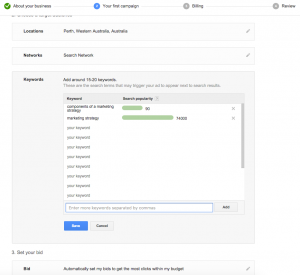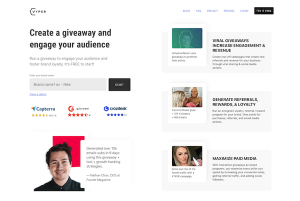User experience (UX) optimization and conversion rate optimization (CRO). They both utilize testing software, employ creative data geeks, with an eye toward improving business results.
But where does the common ground end? Where do things get nasty? Does it always, always, always have to come to this?
We think/hope not. We think there’s plenty of find common ground to be enjoyed between UX testing and CRO. It’s an important thing to get right—because they are not independent phenomena. Here are some thoughts about the differences, and ideas around getting the balance right.
Let’s start with a list.
Usability testing
- Goal: Improve customer experience
- Focus: Make interfaces easier to use
- Answer: Why are my customers doing what they’re doing?
- Methodology: Largely qualitative
Conversion Rate Optimization
- Goal: Boost business metrics (add-to-cart, conversion, bounce, etc.)
- Focus: Identify pain points in the product browsing, evaluating, and purchasing experience
- Answer: Why aren’t people buying more stuff?
- Methodology: Largely quantitative
The common thread between CRO and UX, is the shared goal of measuring and understanding site effectiveness and human motivation. By pairing personas with advanced segmentation, a strategy can be formulated to execute upon for conversion goals. It’s imperative to understand the human intent and then translate it into a roadmap for success.
–Heather Nigro, Moxxii
We think the relationship isn’t a simple dichotomy at all. CRO practitioners are wise to listen to the UX pros, and to learn from their process. Let’s take a closer look at a few key distinctions between usability testing and conversion rate optimization.
Analytics
Both UX and CRO pros test extensively, sure. But UX designers also watch real people use things, something that’s altogether impractical for conversion rate optimizers, because watching real people doesn’t scale. However, one-on-one testing allows UX designers to gain key understandings that a simple A/B/n test could never uncover. It also helps you make sure the things you think are causing the results you’re seeing are the real causes.
This brings us to a key point of distinction between UX and CRO. With UX, there’s a “right” answer: whatever the user is thinking when they visit your site, and the best response you can provide to that. There’s a baseline from which you can improve their experience. Although no two users are the same, and each brings their own unique assumptions to the table when they browse your site, there’s still an underlying truth you can aspire to get right.
CRO has no such base. It’s much less of a black-or-white science. We use A/B/n testing because CRO is often testing unconscious biases or preferences.
Let’s use a concrete example. Say you’re testing between two different content-driven promotions: one that replaces a homepage video with an image slider, for instance. Which promotion is better? There’s probably a promotion more users respond to than the other. But if you were to sit down and ask someone to evaluate the two promos—UX style—would you get an honest, in-the-moment answer? Or would your question prompt them to evaluate the value of the two promotions in a more considered way? It would defeat the purpose: to uncover how most people would respond to two promotions, and which will make your business more money.
Intent
How do you know if you should be using a UX or a CRO test? When does usability affect purchase inclination? It all comes down to intent. And this works both ways: What are your intentions? Why are you conducting this test? What are you curious about? Conversely, what’s your customer trying to do? What do you want them to do instead?
Examples of scenarios in which the UX approach is best:
- Site redesigns
- Radically different checkout processes
- When you want to answer why something is happening
- To gauge consumer sentiment (How does the experience make them feel?)
Examples of scenarios in which the CRO approach is appropriate:
- Iterative website changes and re-designs
- Promotional tactics
- Questions about subjective preferences (such as colors/placement of assets)
- When cold-hard data is the best means through which to measure success
- When you need immediate insights
Examples of scenarios in which both approaches can be used together:
- Did a recent CRO campaign produce a confusing or counterintuitive result? Utilize usability testing to probe deeper into the reasons why customers did what they did.
- Certain complex website redesigns (especially for high-volume sites)
- Make sure your CRO campaigns are performing well (or not) for the right reasons)
Conclusion
Now that wasn’t so bad, was it? There are lots of opportunities for CRO and UX professionals to collaborate and make better customer experiences with their combined expertise.
Thanks to Doug Roche, Monetate UI guru for his help with this post, and to Moxxii CEO, Heather Nigro, for the original idea for this post. Moxxii provides strategic advisement that is authentic. With a focus commerce strategy, conversion optimization and data analytics, they provide insights to transform your company, paired with the experience and expertise to do it.
Thoughts? Comments? Reach out to us on Twitter. We’ll update this post with some of the best comments.
Digital & Social Articles on Business 2 Community(79)







